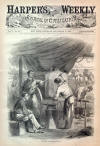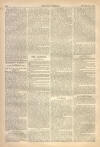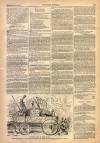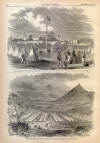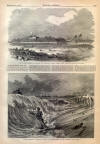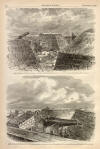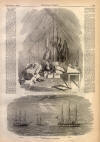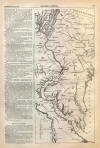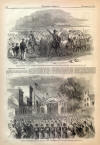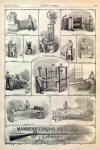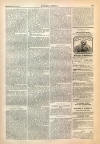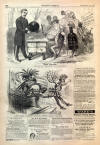Surrender of Fort Hatteras
|
|
This Site:
|
SEPTEMBER, 21, 1861.] HARPER'S WEEKLY. 597 VIEW OF FORT HATTERAS JUST BEFORE THE SURRENDER—COLONEL WEBER'S FORCE UNDER THE WALLS.—[SEE PAGE 599.]CAMP AT PILOT KNOB, MO.THE following letter, from our artist, referring to the illustration on page 596, explains itself: On the right of the sketch is seen Pilot Knob, so named from its peculiar shape. It is, I believe, the largest known mountain of pure iron ore in the world. The rocks (pure ore) which crown its summit are forty feet in perpendicular height. The perpendicular of the hill itself is rather more than five hundred feet. And the valley it overlooks is six hundred feet higher than the main street of St. Louis, which is distant by rail 86 1/2 miles to the north. We are fifty miles west of the Mississippi River, attainable by a road, part plank and part gravel. Pilot Knob is the terminus of the railroad. The Iron Mountain works take precedence of those at the Knob only because of their being first established. At the base of the Knob are seen the works for preparing and smelting the ore. The ore is brought down from the quarries near the summit by means of a wire cable and drum, there being cars attached constantly moving up empty and down laden. In the middle distance is a train of cars just starting from the terminus for St. Louis. The hill in the centre is called "Bogy Mountain." It has two peculiar rocks near the top surmounted by tall trees, which give it the appearance of a gate. The hill on the left is called the "Shepherd Mountain," and is rich in magnetic ore. It is much larger, as a hill, than the Knob. There are cannon planted on the Knob, which command the country for miles, heavy Columbiads on the different hills, and generally a force of six or eight thousand United States troops in the valley. GALLANT EXPLOIT OF AID-DE-CAMP FISKE AT THE BOMBARDMENT OF FORT HATTERAS.—[SEE PAGE 599.]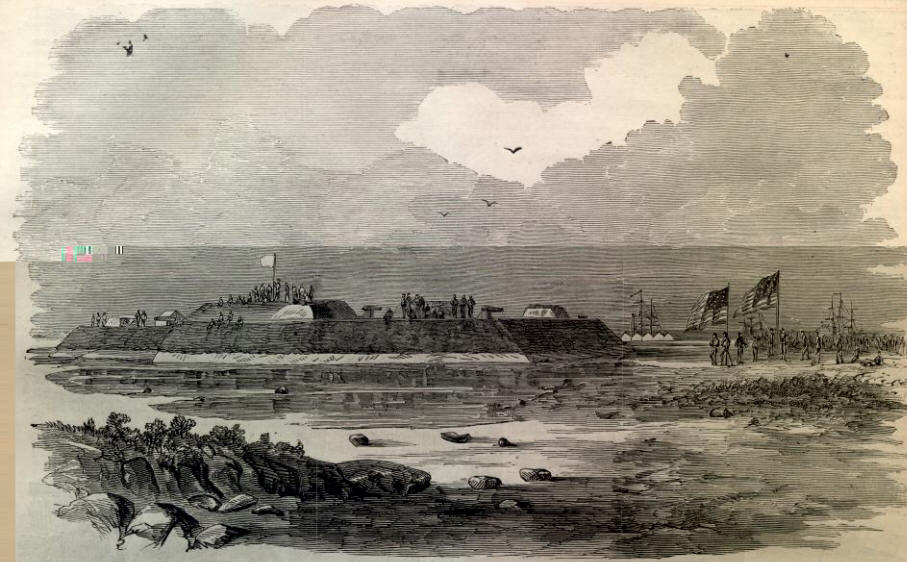 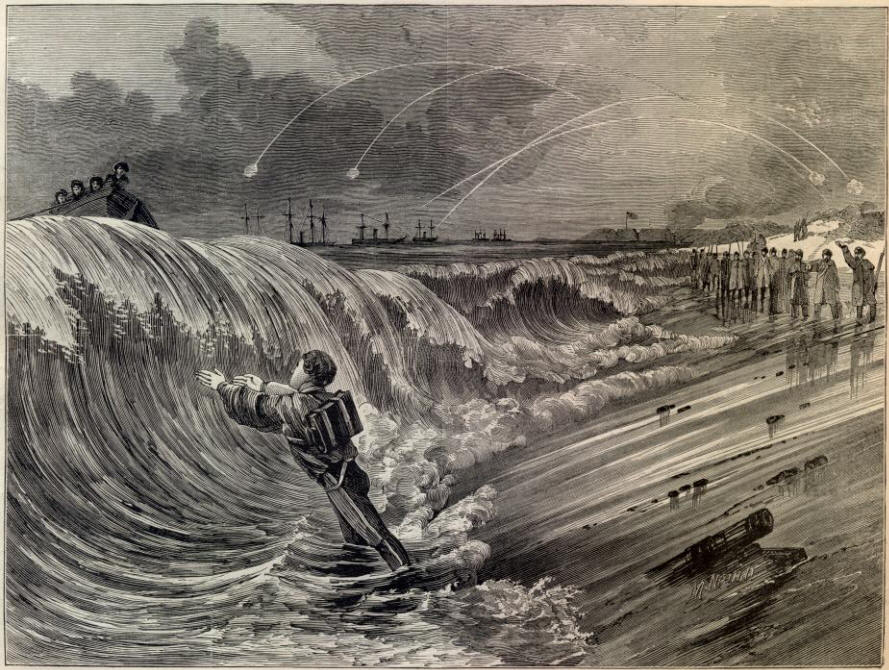 |
||||||||||||||||||||||||
|
|
||
|
|
Site Copyright 2003-2018 Son of the South. For Questions or comments about this collection, contact: paul@sonofthesouth.net |
|
|
Are you Scared and Confused? Read My Snake Story, a story of hope and encouragement, to help you face your fears. |
||
